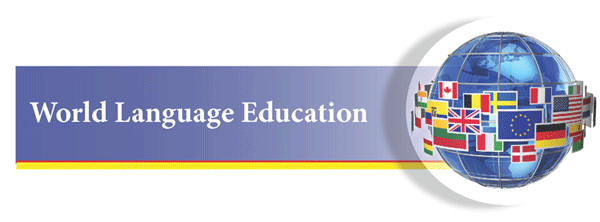|
|
| Thematic Unit Title: |
Discovering Civilizations |
| Subject: |
Civilizations |
| Goals: |
1. Communicate in Languages Other than English
2. Gain knowledge and Understanding of Other Cultures |
| Standards: |
1.1 Students engage in conversations, provide and obtain information, express feelings and emotions, and exchange opinions.
1.2 Students understand and interpret written and spoken language on a variety of topics.
1.3 Students convey information, concepts, and ideas to listeners and readers for a variety of purposes.
2.1 Students demonstrate an understanding of the relationship between the perspectives and practices of cultures studied and use this knowledge to interact effectively in cultural contexts.
2.2 Students demonstrate an understanding of the relationship between the perspectives and products/contributions of the cultures studied. |
| Contexts\Outcomes: |
Students demonstrate an understanding of the relationship among the perspectives, practices, and products of the civilizations studied. |
| Progress Indicators Goal 1: |
1.1C Create detailed oral descriptions within a context.
1.1E Express individual perspectives and defend opinions.
1.1F Exchange information with peers and others.
1.2C Derive meaning from selected authentic materials.
1.2E Apply diverse strategies to derive meaning and detail from unfamiliar material.
1.2G Research and synthesize information from a variety of sources.
1.3B Give a description orally and in writing using complex sentences.
1.3D Interpret information from authentic material to an audience.
1.3E Elaborate on present, past, and future events. |
| Progress Indicators Goal 2: |
2.1A Analyze the development of different cultural practices.
2.2A Analyze the relationship between cultural perspectives and products/contributions as represented in expressive forms of the culture studied; such as, art, literature, music, dance, etc.
2.2B Discuss and analyze external factors which affect products and contributions.
2.2C Evaluate the expressive forms of the target culture; such as, art, literature, music, dance, etc.
2.2D Explain objects, images, and symbols of the target culture. |
| Progress Indicators Goal 3: |
|
| Progress Indicators Goal 4: |
|
| Progress Indicators Goal 5: |
|
| Essential Skills\Knowledge: |
Topic specific vocabulary
Verbs – present, past, imperfect, future tenses/orthographic changes of specific verbs
Question words
Cultural background information
Historical background information |
| Assessments: |
Oral Presentation:
Students write and illustrate, sing, or act out a legend.
Written Project:
Student groups create civilization criteria guides.
Final Project (Oral presentation with graphics as visual cues.):
Student groups invent their own civilization.
Vocabulary Quiz |
| Instructional Strategies: |
Pair Activities:
Pairs of students create a mythological creature or god.
Cooperative Learning:
Student groups assemble time capsules representing a new civilization.
Students generate a dig box of recovered items.
Students depict hieroglyphics, including names and mottos from the target culture.
Venn Diagrams:
Students use a Venn diagram to compare/contrast a discovered civilization with their own.
Concept Ladders:
Students develop a concept ladder characterizing items found in a simulated archeological dig.
Comparison Charts:
Student groups chart comparative elements of legends.
Researching legends, civilizations, and cultures:
Students view and discuss a slide show representing various civilizations.
Students read and analyze legends from the target culture.
Research historical background information.
Internet Research |
| Resources: |
Textbook
Internet
Library resources
Library research
Slide shows
Literature
Simulated digs |
| Other Resources: |
|





